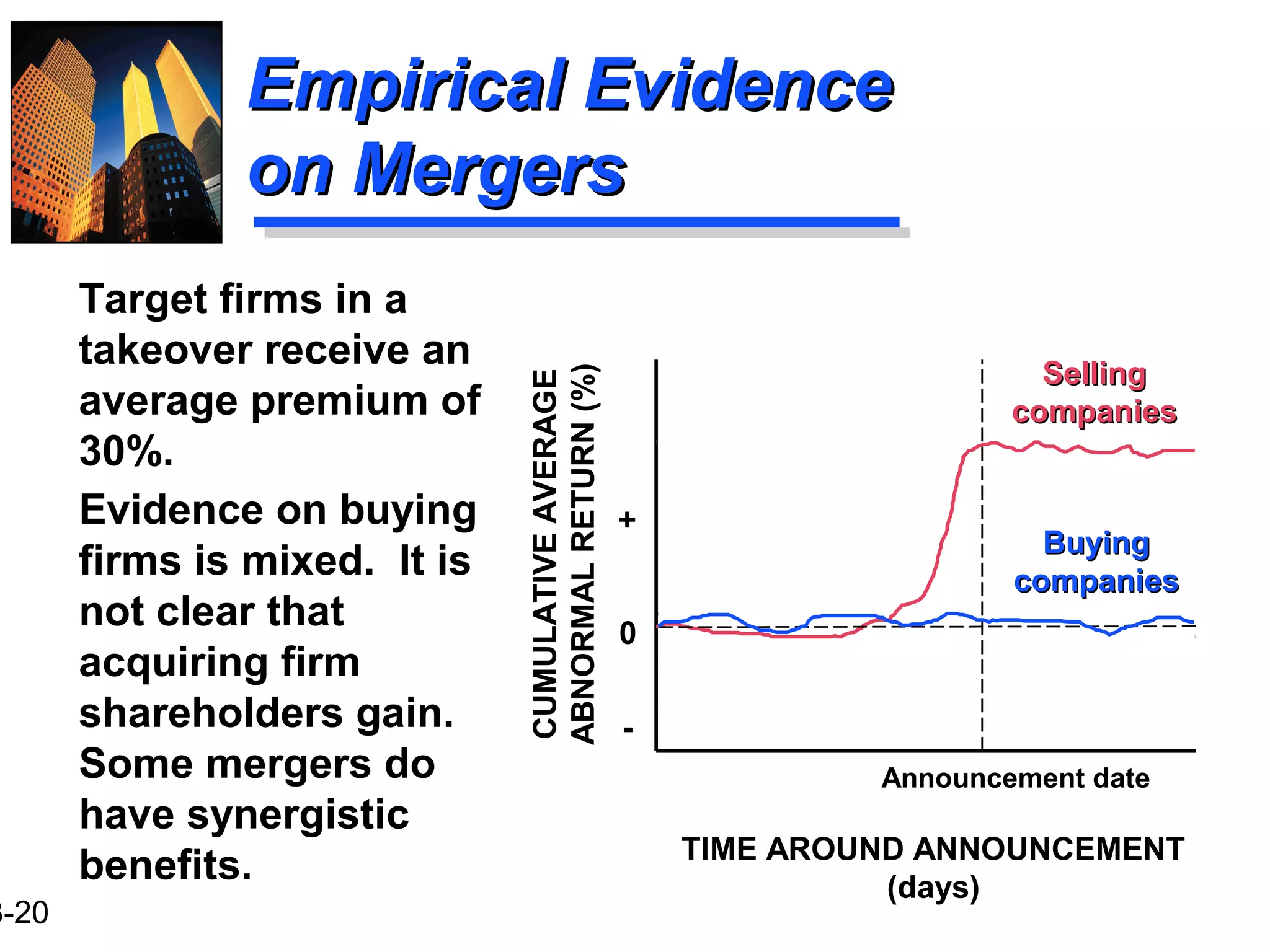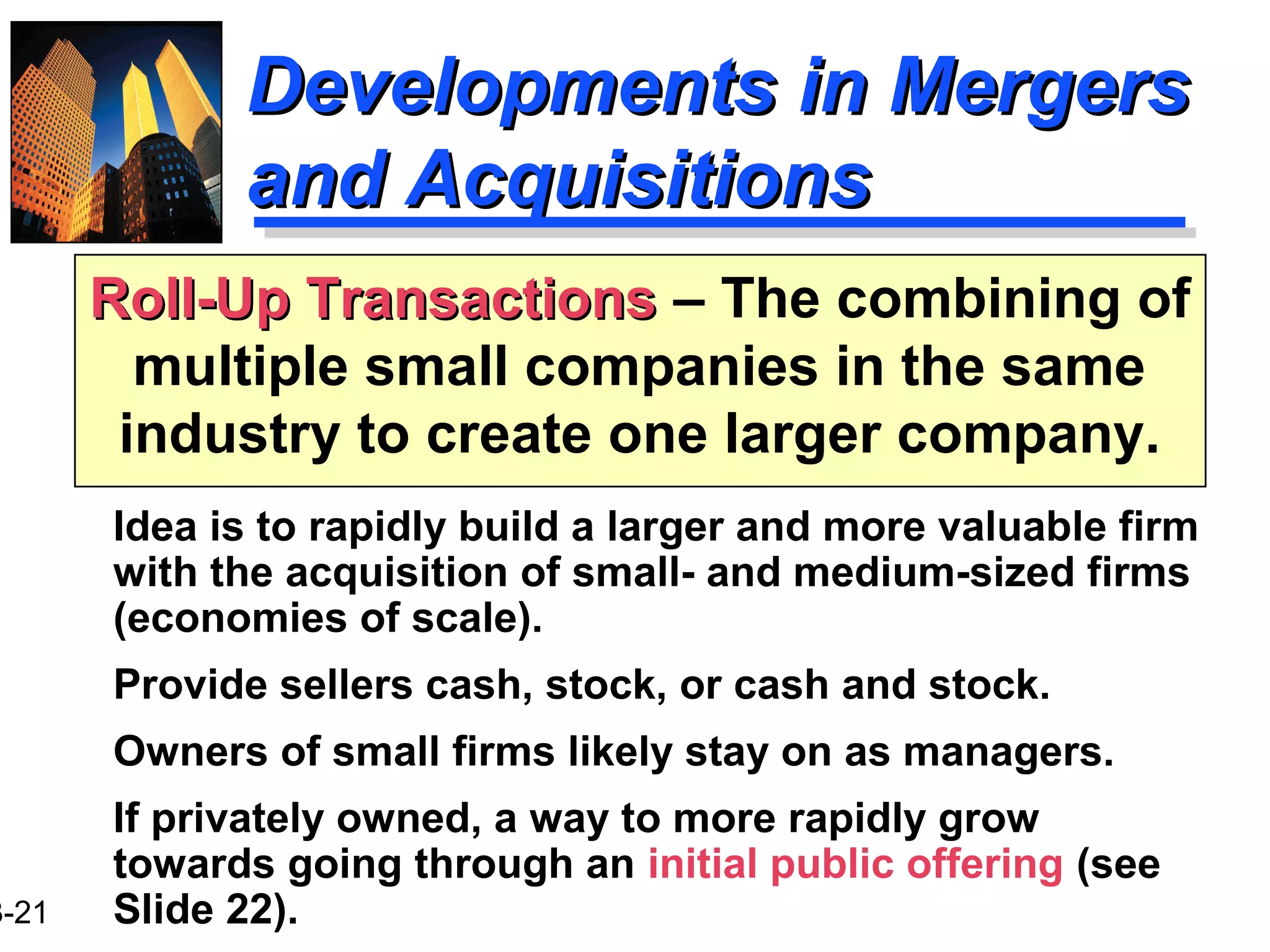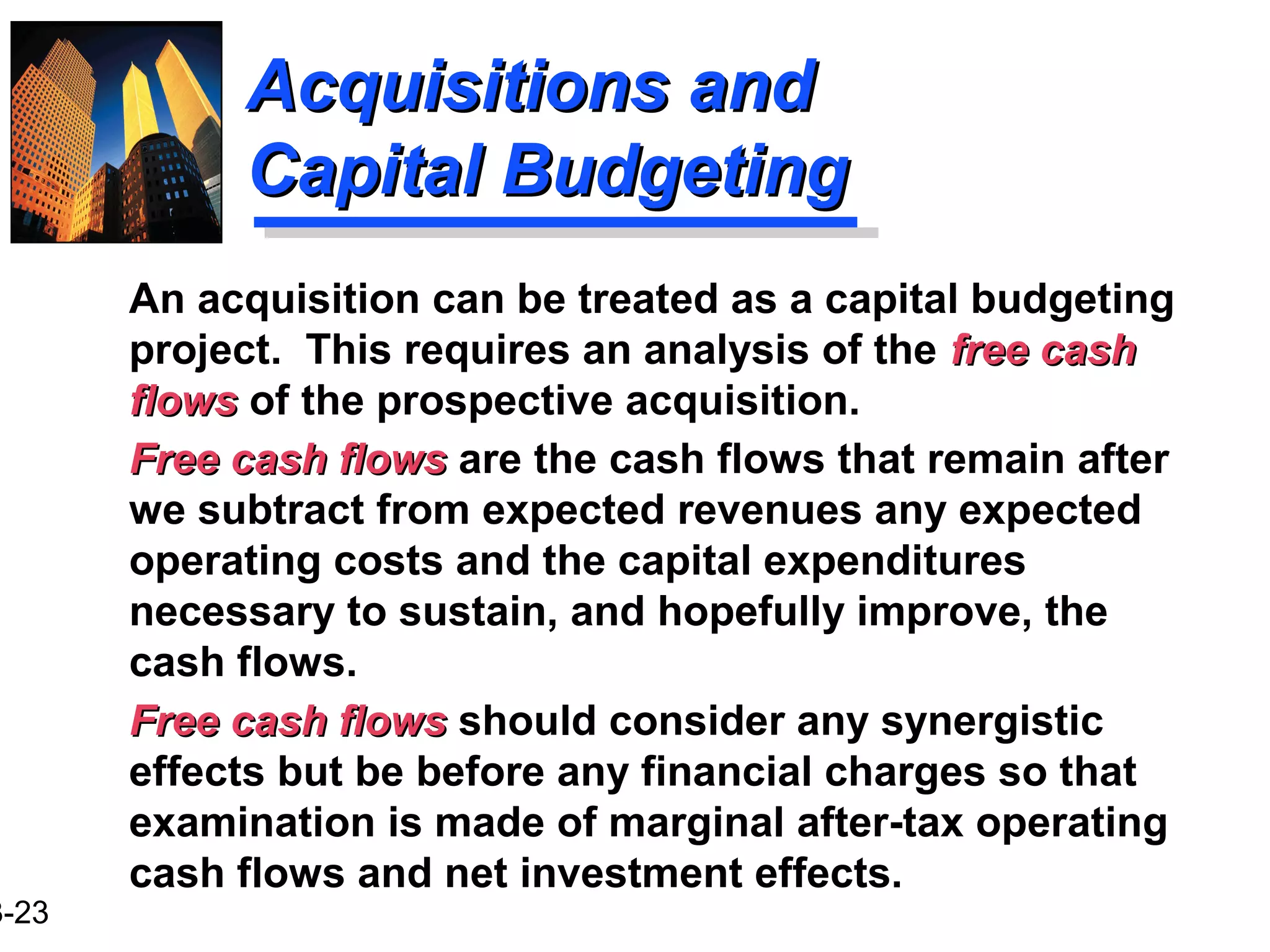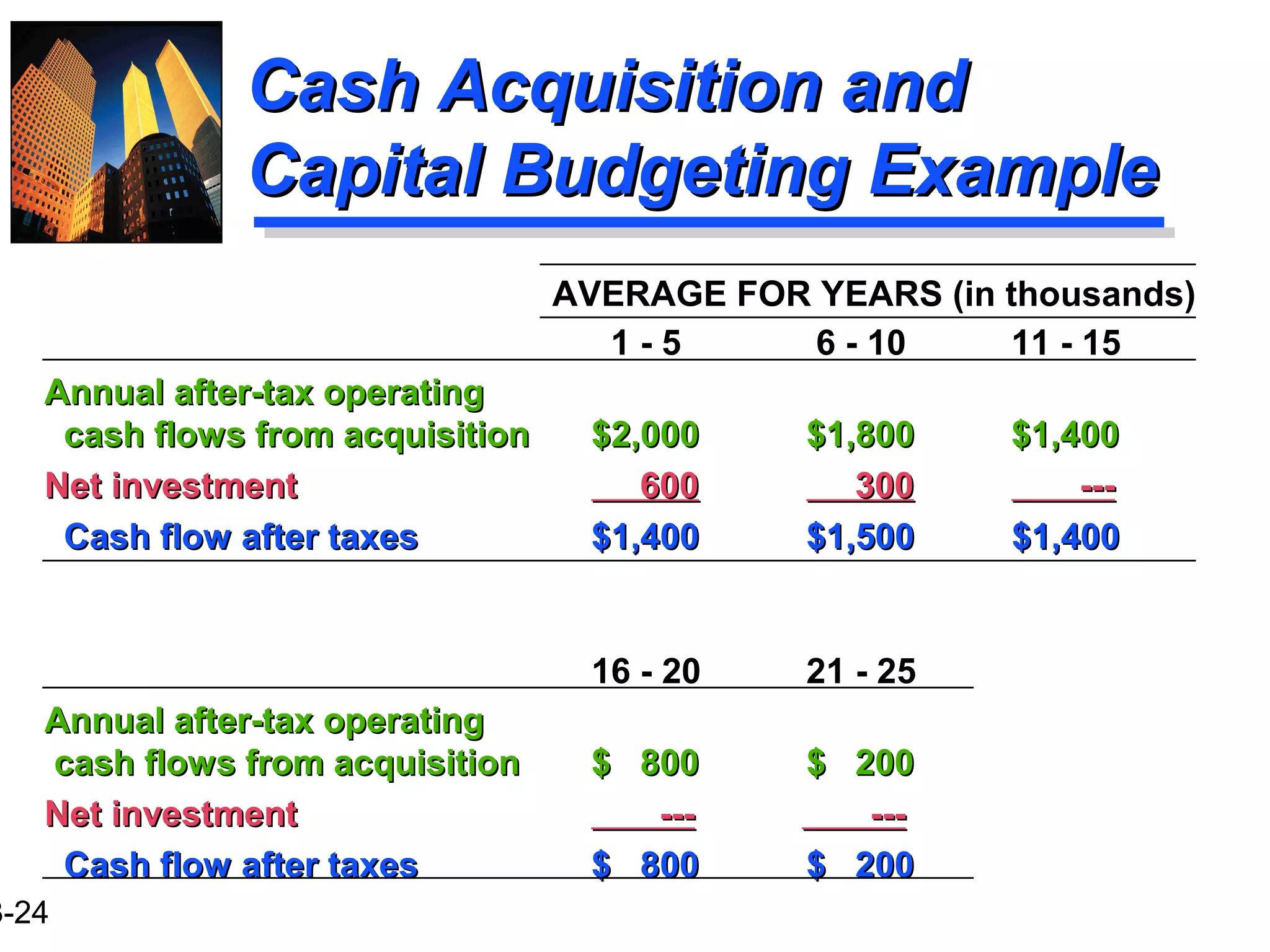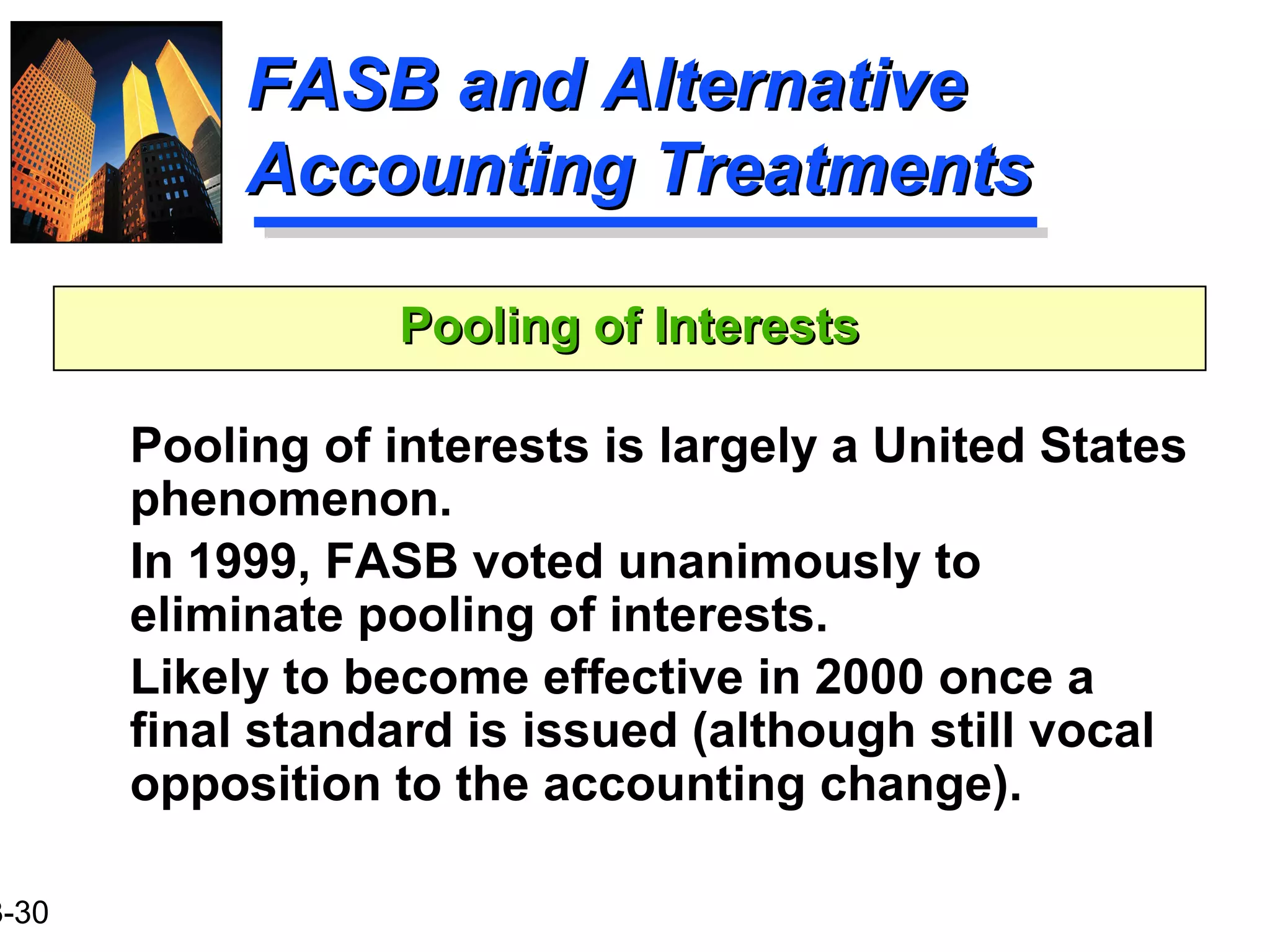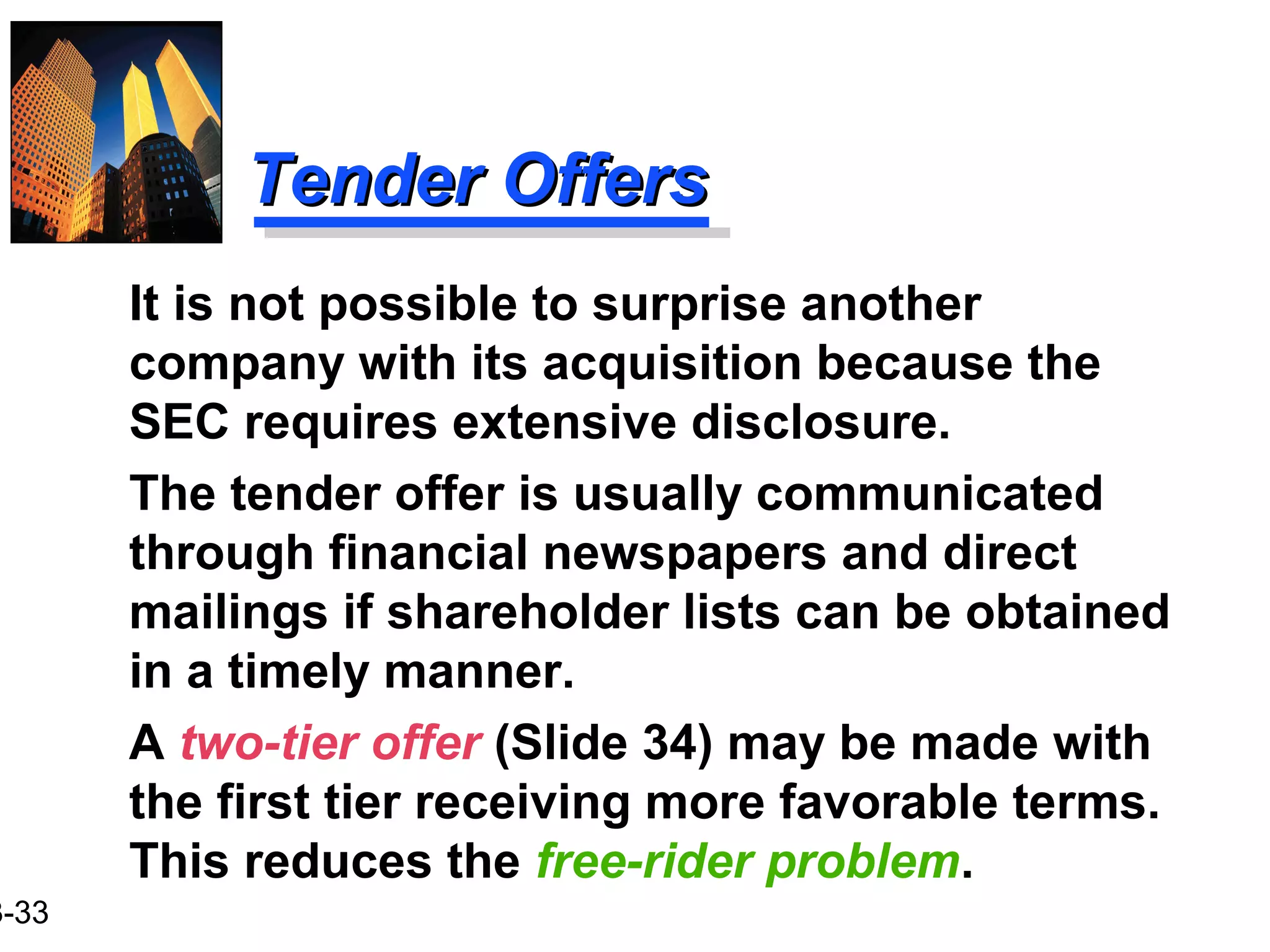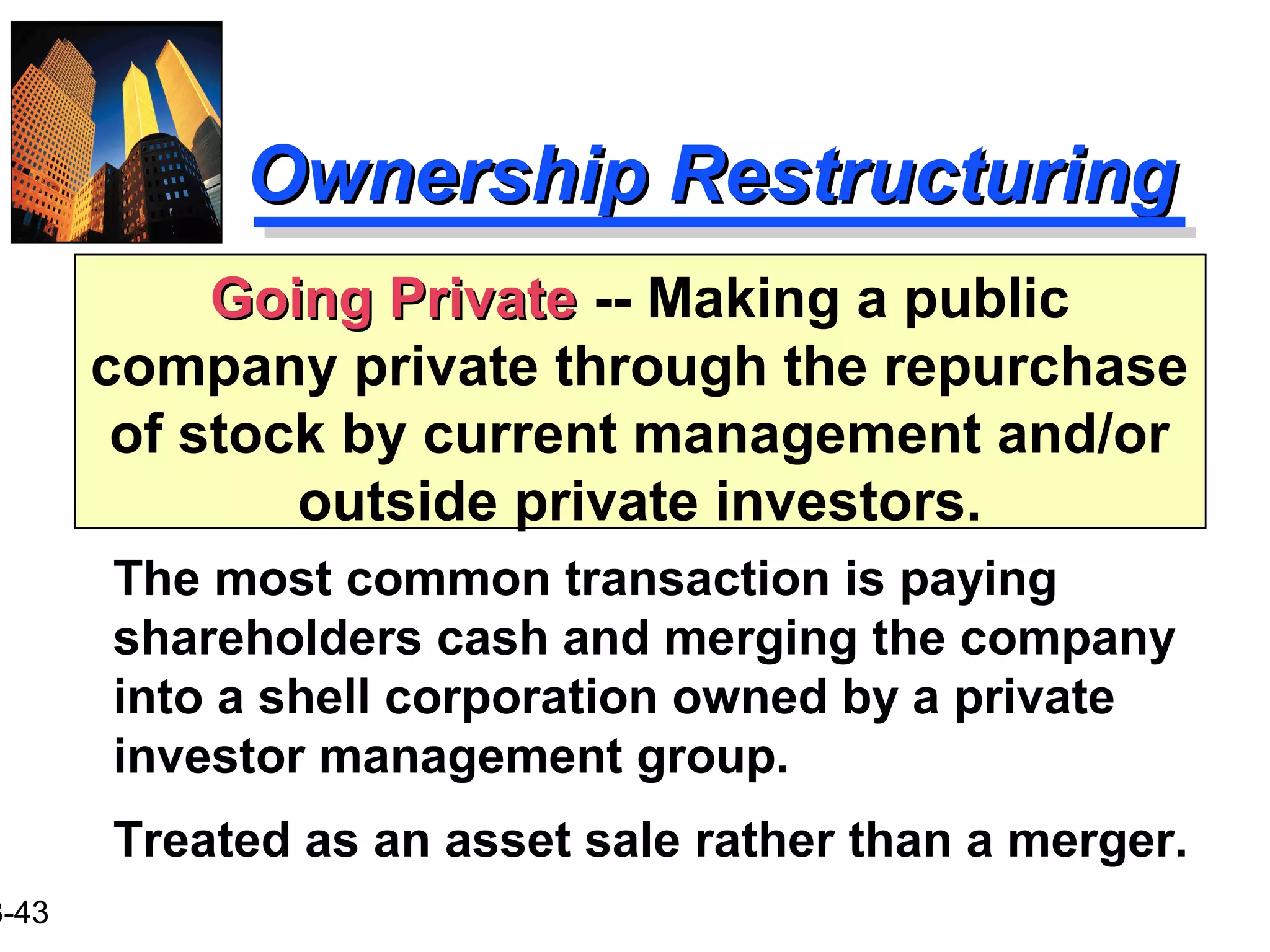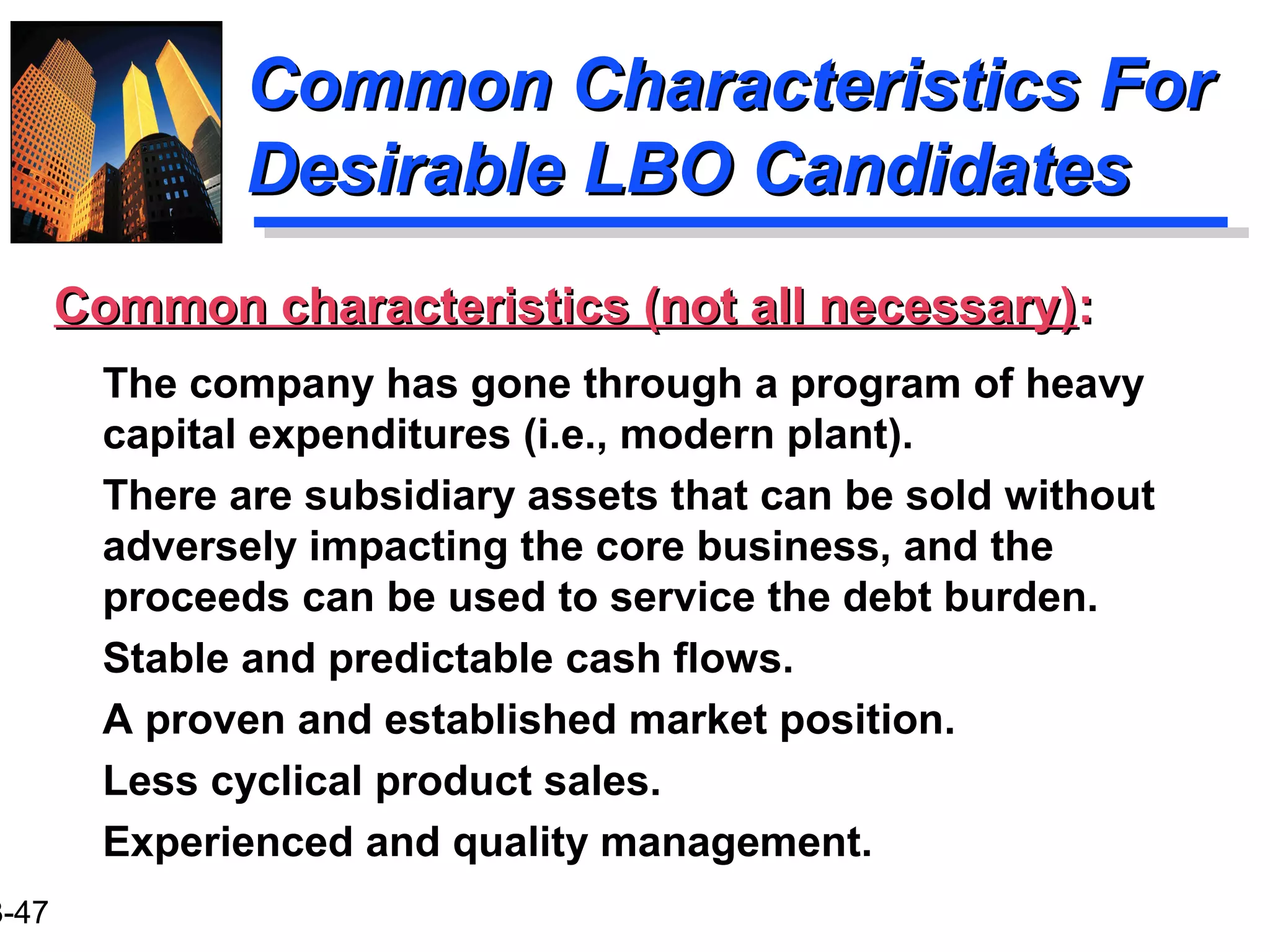This document discusses various forms of corporate restructuring, including mergers, acquisitions, divestitures, and leveraged buyouts. It provides details on strategic acquisitions involving common stock, including examples of calculating earnings per share and exchange ratios for mergers. The document also covers tender offers, defensive tactics by target companies, and the accounting treatment of goodwill in mergers and acquisitions.









![3-10
Strategic AcquisitionsStrategic Acquisitions
Involving Common StockInvolving Common Stock
The shareholders of Company A will
experience an increase in earnings per
share because of the acquisition [$4.10 post-
merger EPS versus $4.00 pre-merger EPS].
The shareholders of Company B will
experience a decrease in earnings per share
because of the acquisition [.546875 x $4.10 =
$2.24 post-merger EPS versus $2.50 pre-
merger EPS].](https://image.slidesharecdn.com/ch23-180315073238/75/Financial-Management-Slides-Ch-23-10-2048.jpg)
![3-11
Strategic AcquisitionsStrategic Acquisitions
Involving Common StockInvolving Common Stock
Surviving firm EPS will increase any time the
P/E ratio “paid” for a firm is less than the
pre-merger P/E ratio of the firm doing the
acquiring. [Note: P/E ratio “paid” for
Company B is $35/$2.50 = 14 versus pre-
merger P/E ratio of 16 for Company A.]](https://image.slidesharecdn.com/ch23-180315073238/75/Financial-Management-Slides-Ch-23-11-2048.jpg)
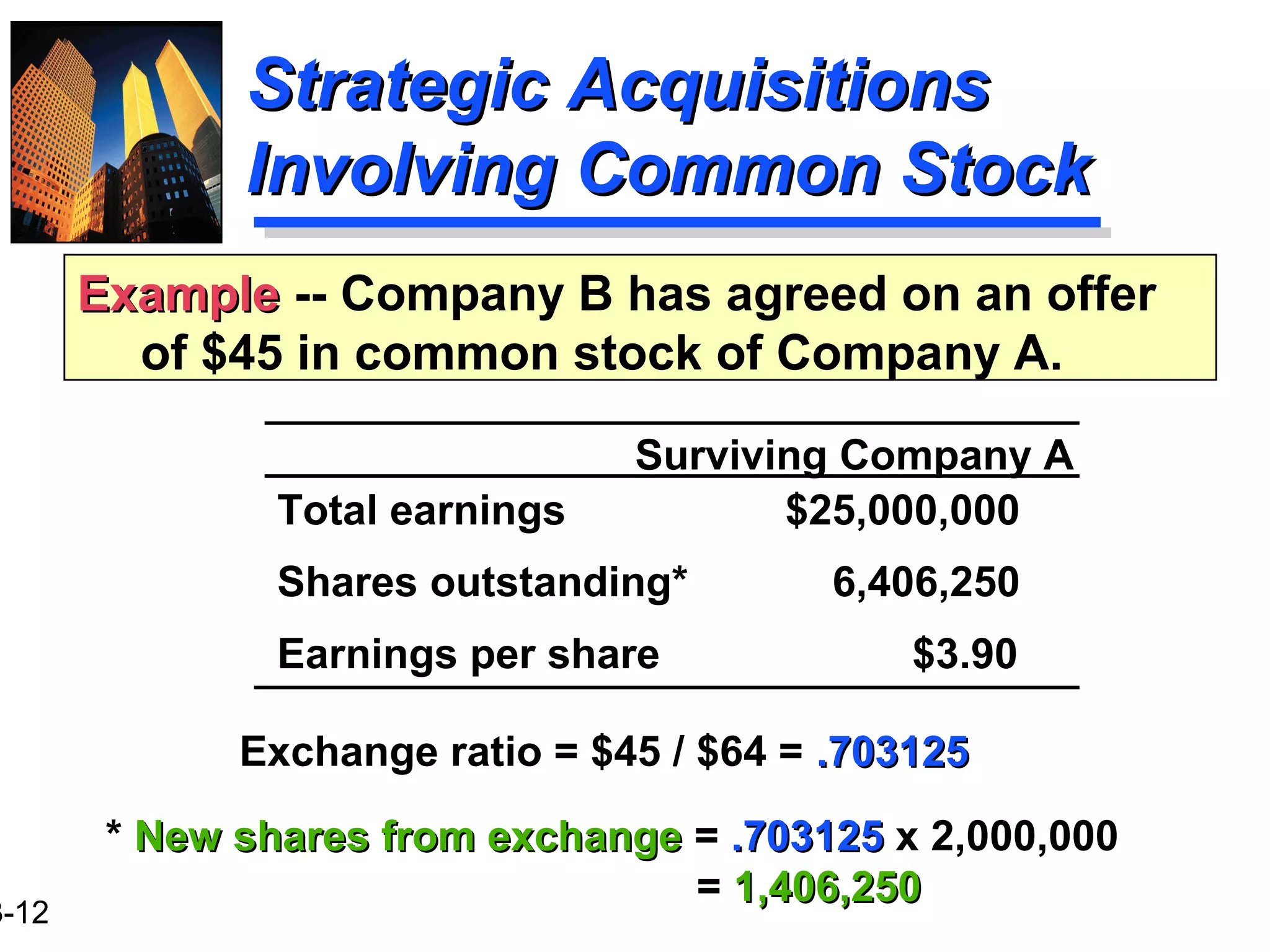
![3-13
Strategic AcquisitionsStrategic Acquisitions
Involving Common StockInvolving Common Stock
The shareholders of Company A will
experience a decrease in earnings per share
because of the acquisition [$3.90 post-
merger EPS versus $4.00 pre-merger EPS].
The shareholders of Company B will
experience an increase in earnings per
share because of the acquisition [.703125 x
$4.10 = $2.88 post-merger EPS versus $2.50
pre-merger EPS].](https://image.slidesharecdn.com/ch23-180315073238/75/Financial-Management-Slides-Ch-23-13-2048.jpg)
![3-14
Strategic AcquisitionsStrategic Acquisitions
Involving Common StockInvolving Common Stock
Surviving firm EPS will decrease any time
the P/E ratio “paid” for a firm is greater than
the pre-merger P/E ratio of the firm doing the
acquiring. [Note: P/E ratio “paid” for
Company B is $45/$2.50 = 18 versus pre-
merger P/E ratio of 16 for Company A.]](https://image.slidesharecdn.com/ch23-180315073238/75/Financial-Management-Slides-Ch-23-14-2048.jpg)





